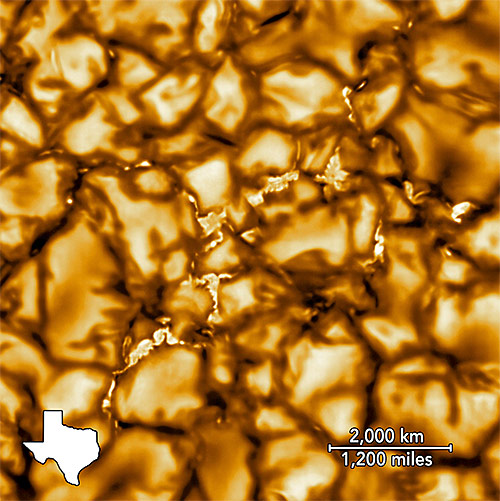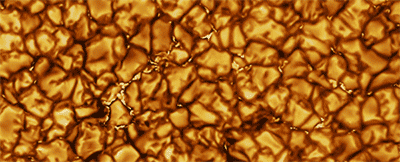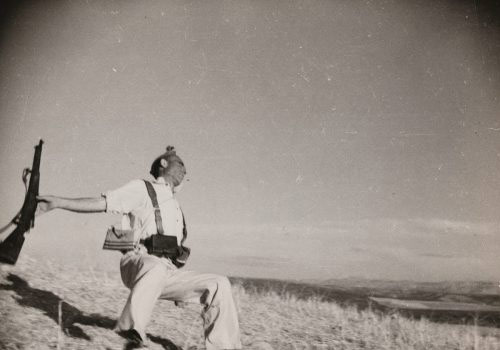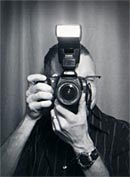When my boys were on their Christmas break from school, we stopped by our local library. I perused the art/photography section for a bit as my boys looked for books for themselves. I happened to stumble across something interesting.
I spent January (off and on) reading Capturing the Light: The Birth of Photography, a True Story of Genius and Rivalry.
I’d read a chapter or 2 some evenings as my 3rd grader and I unwound for bed:

My wife posted this on Instagram with the caption
"Bedtime reading x2."And I did a bulk of reading (roughly the last 2/3s of the book) on a week-long vacation to Mexico last week:

Reading by the pool.

My wife caught this photo of my son and I reading before heading out to a nice lunch.

Reading in the lobby of our hotel (after enjoying a pina colada and Diet Coke).

Working on my syllabus and doing some reading in the hotel lobby, overlooking the Pacific and Ixtapa Island.
The two authors (Roger Watson and Helen Rappaport) had the credentials to tackle this topic. Watson is the curator of the Fox Talbot Museum at Lacock Abbey (where Henry Fox Talbot worked through his experiments to help create his first photographic image), and is a lecturer for DeMontfort University in Leicester. And Dr. Rappaport is a New York Times bestselling author and historian specializing in the years 1837 - 1918, which is a fitting time period if one would like to discuss the genesis of photography.
They kept this from being simply a dry history book as they continually jumped the Channel to go from Talbot to Daguerre - England to France - as they at first independently worked through their own photographic processes. It was an easy and informative read with a lot about these mens' personal lives as well.
Henry Fox Talbot was an educated scholarly man. He kept rigid journals (well labeled, of course) of his experiments and interests of all sorts. He kept and documented his correspondences with friends and family. Although he seemed quite introverted, he was a member of Parliament for a stint, as that's what "people of his stature" were expected to do.
Louis Daguerre, on the other hand, was a moody artist. He worked in fits of (stereotypical artistic) passion, rarely taking notes of what he was doing. He was an outgoing, charismatic, flashy self-promoter. As I read
Capturing the Light, I could see him in a top hat running a 3-ring circus. He seemed to have a large personality.
Seeing how these very 2 different men came together (unwillingly at times) to create some of the first photographic images the world had seen was quite entertaining and very insightful.
And I didn't know that Niepce was so close to this charge of inventing photography when he suddenly passed away. He and Daguerre had only recently started working hand-in-hand before Niepce's death, and Niepce had made great strides. (Daguerre did the right thing and vowed to uphold Niepce's name and gave Niepce's family a cut of his government pension from his "status" as the father of photography.)
Here's one of the entries that was shared in
Capturing the Light from one of Talbot's notebooks:
Nitrate of Silver
Wash a sheet of paper with it. Place a leaf and fennel or other complicated form upon it. Press it down with a pane of glass - when blackened with the sunshine place it in something that will alter it's property of blackening - qu. Prussiate of potash? Sulp. Acid. Mur Soda. Carb. Soda.
Instead of the leaf try several bits of coloured glass - thus a silhouette might be taken, especially in a dark room.
The book continues about this entry, mentioning Talbot's exemplary record-keeping:
"... we in fact know the exact date when the idea of photography first dawned on him. It was some time during the afternoon of Saturday 5 October 1833 at the Villa Melzi on the shores of Lake Como. That short, simple notebook entry of only seventy-seven words contains the germ of an idea that would be the basis of numerous experiments taken up by Talbot throughout 1834 which led him to the development of his own distinctive process of photogenic drawing."Two chapters later when Watson and Rappaport described Talbot making his first photographic image - as he painted a salt solution onto paper and sensitized it repeatedly with a solution of silver nitrate and made his famous image of the latticed window - I *swear* I got goosebumps and then re-read those pages over again.
I know that I'll be referencing things I learned in this book in my classes, and I'll be sharing stories from this book. I also know that I'll be posting quotes and interesting quips from this book here on my blog for the next many months. And it's also inspired future reading: I have Talbot's
The Pencil of Nature heading my way as I write this, Talbot's record of his correspondences are all
online and I'd love to dig through those, I'm looking for for
Speculating Daguerre which has become a collector's item, and I have a digital version of
Opticks by Isaac Newton ready to read (well, that one will be a dry read, so I honestly only expect to skim it).
There was one small thing that I had a little problem with: Talbot seemed to often be painted as getting short-changed or slightly cheated especially later on throughout the timeline. It was hard to know how much of that notion was totally true, or if it was because one of the authors is the curator at the Talbot Museum and would have built a natural affinity towards Talbot. It sometimes felt that Watson was being too soft or overly-gentle towards Talbot's situation. But that might not be the case - maybe it was completely warranted and I'm just looking into it too far.
Anyway, it was a fantastically fun, educational, and historical read. And I'm glad I stumbled across it at my local library.
That's my entry for January's "monthly challenge" -
click here to read my 2020 monthly challenge thoughts.




























